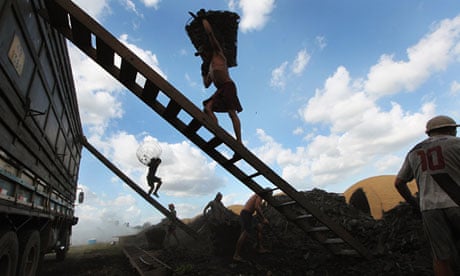The flurry of excitement in 2010 around the Consumer Goods Forum (CGF) announcement that its 400-plus members would work together to achieve zero net deforestation by 2020 was palpable. Those of us in the conservation community had the "aha" moment we had been waiting for – finally the private sector would join us in combatting one of the fastest-growing contributors to climate change: deforestation.
It's estimated that the global population will reach nine billion by 2050; food production will need to grow by 70% to meet increasing demand, while currently only one in six people has access to 20-50 litres of safe fresh water a day. The CGF member companies responded by committing to a crucial investment in how our planet mitigates and adapts to climate change. The NGO community was abuzz with what we believed to be a monumental milestone; everything seemed to be on the right track. It's now been more than two years since that commitment was announced, with little progress to report.
Many CGF members have been active in the certification roundtables on, for example, sustainable palm oil or sustainable soy, which have very strong commitments towards zero net deforestation. But achieving this broader goal has been challenging.
One exception to the lack of progress happened at last summer's United Nations Rio+20 conference.
It was there that the US government announced it would help companies move towards the zero net deforestation target through the launch of a partnership with the CGF (now called the Tropical Forest Alliance (TFA) 2020). Unfortunately, little else has been done to address the challenge of managing deforestation associated with commodity sourcing head-on, leaving companies to grapple with two key issues.
The first is a lack of comprehensive data demonstrating the strong link between the sourcing of a specific commodity, such as oil palm, and the potential of that crop to drive further deforestation across the globe. The second issue is the limited movement by the roundtables in identifying agreed areas for protection. That said, for companies serious about reaching their goal of zero net deforestation, participation in the roundtables is an essential component.
While my confidence in the goal's significance has not waned, supply chains are complex and there are some daunting issues to take on – including political instability, market failures and price volatility.
These challenges, however, are likely to worsen as the impacts of climate change and its effects on food production become better known and more apparent.
One solution to ending this paralysis is simply to start. And companies can start by taking these steps:
1. Utilise the CGF platform by working together.
2. Invest in building out existing tools such as the Deforestation Guides for Commodity Sourcing, which ultimately must be refined and strengthened in order to pinpoint with high precision the landscapes most at risk of deforestation tied to commodity sourcing.
3. Agree on the right investments to incentivise communities and companies to stop deforesting by promoting sustainable livelihoods that preserve and protect the land on or near farms.
4. Identify more sustainable methods for increasing production on existing agricultural lands, ruling out the need for deforesting to increase supply.
5. Understand the financial value to farming communities in terms of the water provided by healthy landscapes, the climate regulation necessary for predicable harvests and the biodiversity crucial to natural habitats.
6. Create a robust stakeholder engagement and community development process for addressing key agricultural drivers in specific areas of sourcing for key commodities (palm oil, soy, sugarcane, coffee, cocoa, beef, dairy, pulp and paper).
The common thread in these actions is a recognised need for more in-depth and accurate analysis of deforestation and how it is affected by increasing demand for agriculture commodities. Even with companies firmly committed to changing their practices for the better, there remains an enormous amount of uncertainty as to the best way to invest in sustainable agriculture to meet the CGF pledge.
Forming the right collaborations, and making the necessary pre-competitive investments to develop these solutions, will help all stakeholders reach the goal of zero net deforestation and ensure healthier communities for those producers linked to CGF companies for their livelihoods.
Joanne Sonenshine is director of Sustainable Food and Agriculture Markets at Conservation International.
This content is brought to you by Guardian Professional. Become a GSB member to get more stories like this direct to your inbox

Comments (…)
Sign in or create your Guardian account to join the discussion